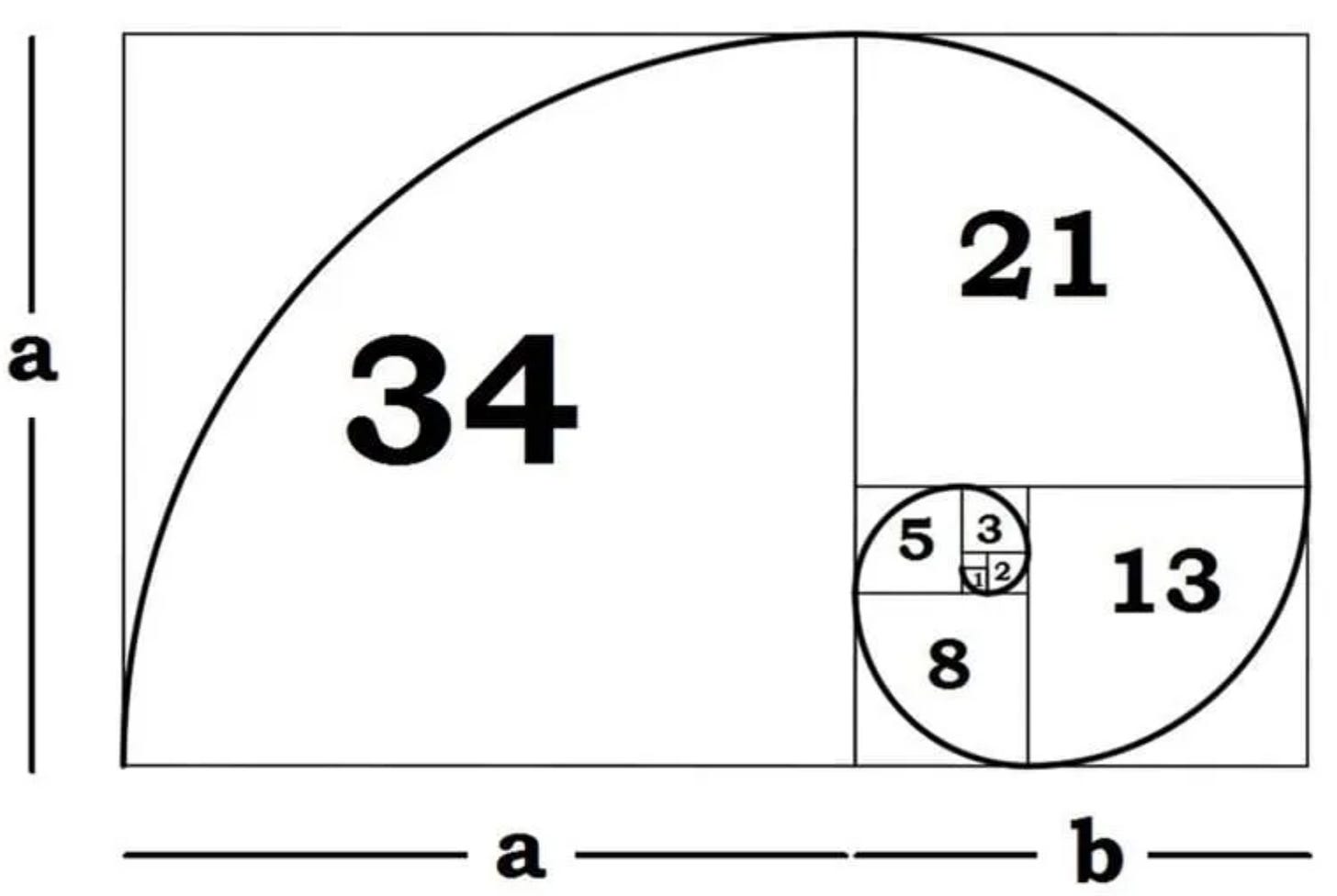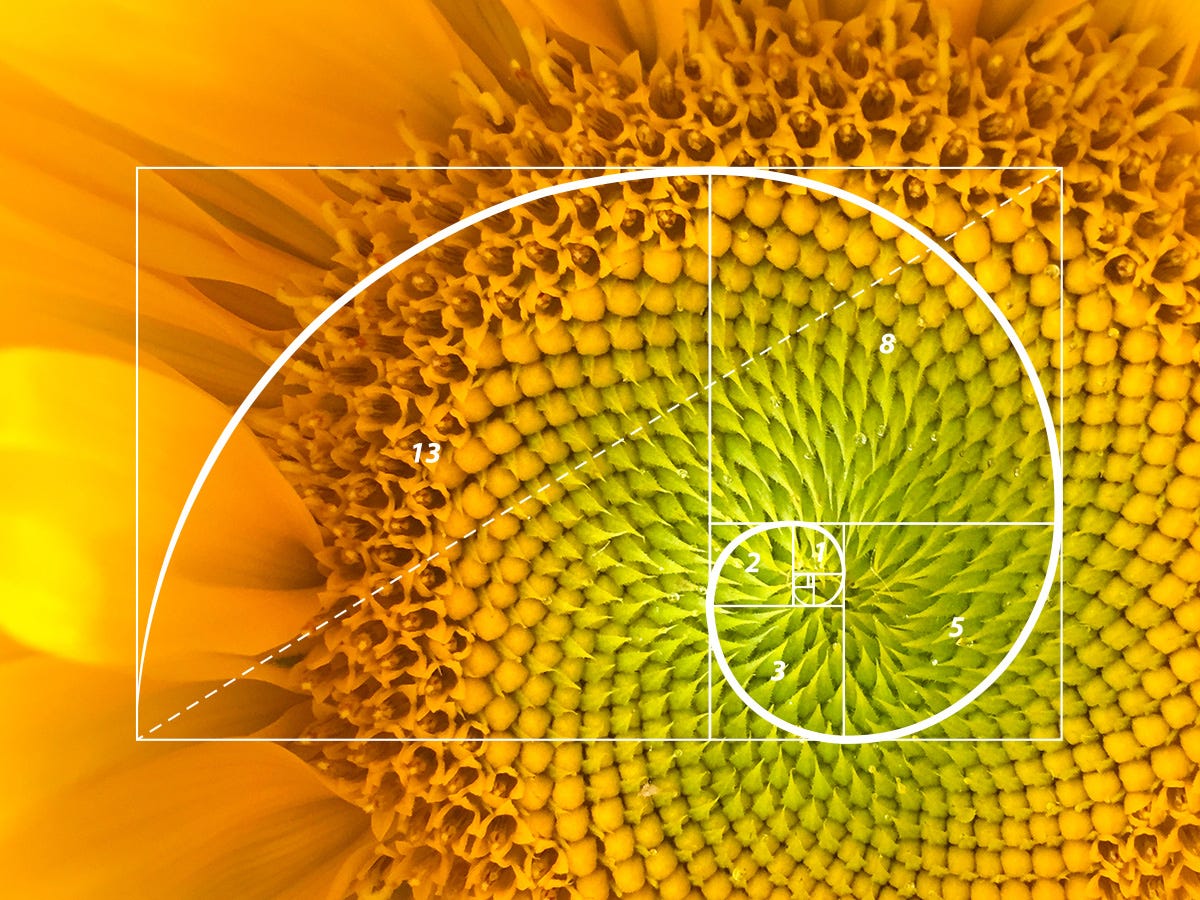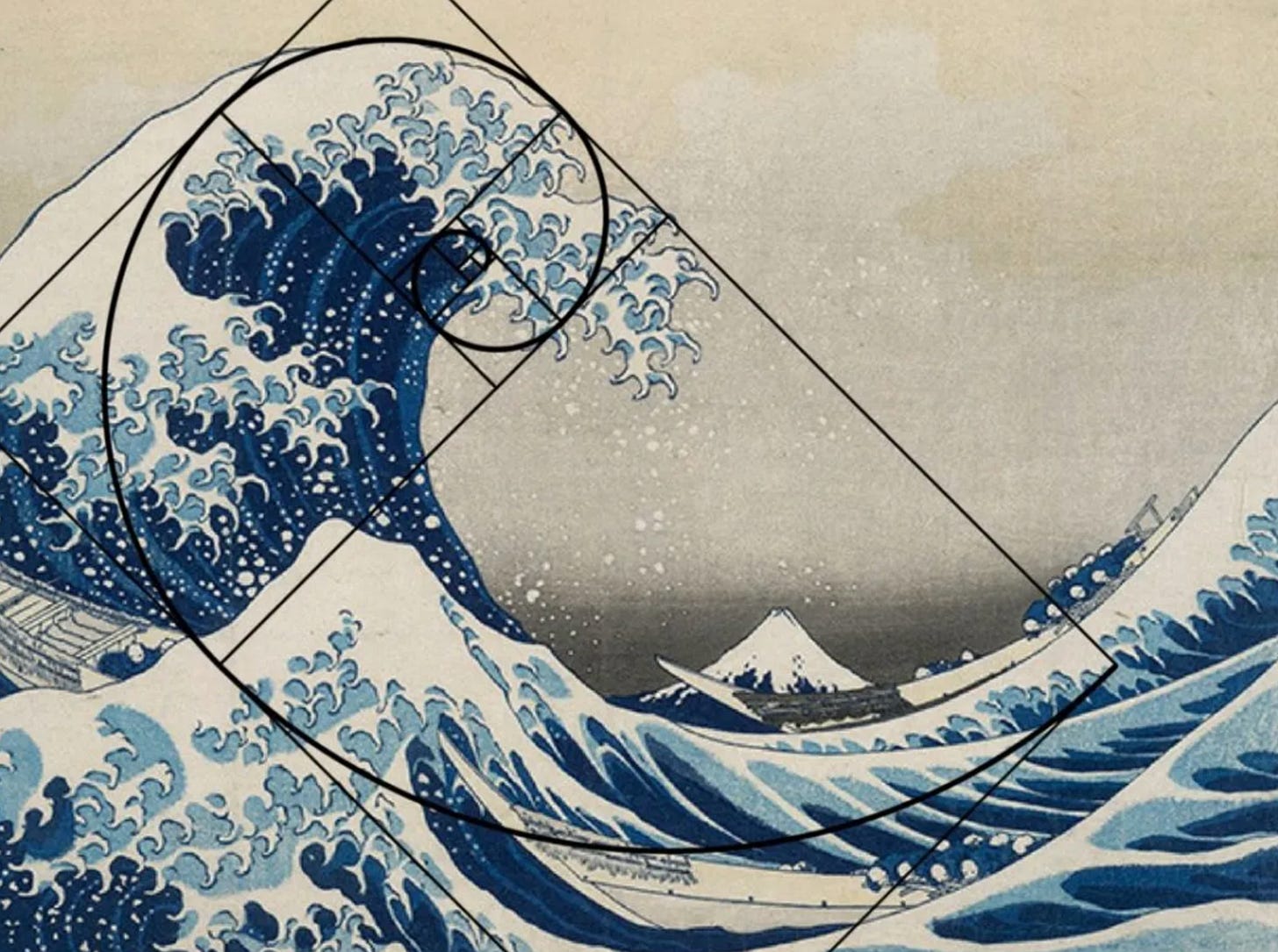Beauty isn't everything...or is it??
Buckle up and embrace the absurdity
Embark on an intergalactic journey with Ford Prefect as your guide. Forget the skepticism; this isn't about real people – it's about cosmic truths!
Ford Prefect, armed with the wisdom of the Hitchhiker's Guide, shares a cosmic tale. Eons ago, a supercomputer named Deep Thought took its sweet time to unveil life's meaning: 42! Why 42? It's a cosmic wink, a playful jab at the never-ending quest for answers. Open one door and you’ll find another full of mystery and fun.
Now, what if I tossed a cosmic curveball and suggested the meaning of life isn't 42 but a mind-bending 1.618034?
Let’s dive into the cosmic rabbit hole of the Fibonacci Sequence, the secret code life on Earth depends on. From beauty and protection to rebellions against its order, we explore the fascinating origins and mischiefs when we challenge it.
A quick and painless math lesson
The sequence is simple: 0, 1, 1, 2, 3, 5, 8, 13, 21, 34, and so on. The secret? Each new number is a sum of the two before it. And how do we get 1.618034? Picture a rectangle, divide the area:
Take the dynamic duo a and b, throw them into this formula:
(a+b)/a is about the same as a/b
Voilà!—the golden ratio in all its numerical glory!
Golden ratio or golden rule?
The golden ratio isn't just a math trick; it's a cosmic symphony. From Ancient Egyptians and Greeks to politicians and visionaries like da Vinci and Mozart, it's been everywhere, even whispering in sacred texts.
It works in the natural world too. Plants employ the golden ratio to cleverly pack a maximum number of seeds within minimal space. Imagine the center of a sunflower spiral where 21 seeds grow one way and 34 grow another. This same golden ratio echoes in our own human design – from our wingspan to the features of our faces. It's a universal harmony found both in nature and the graceful proportions of our own existence that helped us evolve and reproduce.
Now if you think that’s cool, have you heard of the Fibonacci Retracement Level? It’s used to predict the future. You heard me. THE FUTURE. Those finance wizards? Well they can recognize when a stock price is gearing up for a comeback.
The rebellion
If you’ve ever seen an episode of Succession, then you know relationships are messy. The chaos lies in the myriad interactions, differing perspectives, and the constant ebb and flow of social dynamics. Communities are not monolithic; they're diverse, with individuals and groups bringing their unique preferences to the table.
Yet, even with friends who can’t let go of a grudge, there exists a kind of harmony – a delicate equilibrium where we find ways to coexist, collaborate, and thrive. So, why aren't we all jumping on this cosmic problem-solving bandwagon? Is the golden ratio not the golden rule?
In a utopian dreamland, perhaps 1.618034 could be the secret code for life's meaning. Alas, reality is more of a rollercoaster, throwing inconsistencies, chaos, and random curveballs our way for no apparent reason. Picture the chaos when complex systems go haywire, when natural disasters hit, or when people, in all their emotional glory, forget Mr. Roger’s approach to conflict resolution – they're just too wild for Fibonacci's orderly embrace. And randomness? Life serves it up generously, like being stuck with a d4 while D&D pals roll d20s. Artists? They're the rebels, kicking Fibonacci rules to the curb for a wild, experimental escapades. It’s like something in the universe found The Sims cheat code to game the system in their favor.
In the grand scheme of things, Fibonacci's just a side player, not the director of the whole show. So what framework is sitting in that chair? Stay tuned. Let me know what you think it all means in the comments.
-Emma







